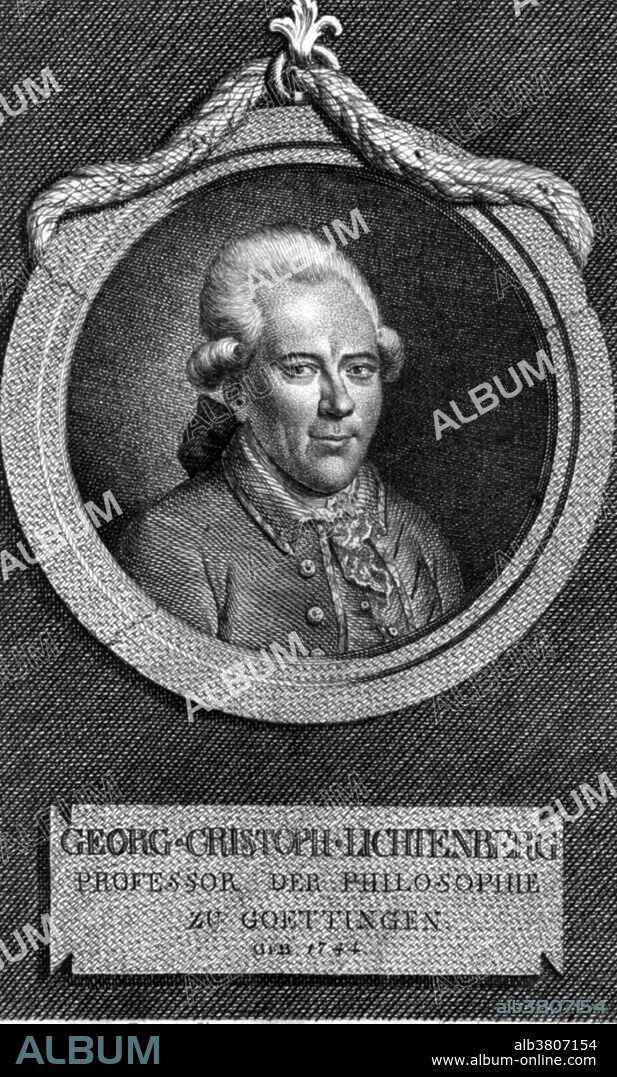alb3807154
Georg Christoph Lichtenberg, German Scientist

|
Add to another lightbox |
|
Add to another lightbox |



Title:
Georg Christoph Lichtenberg, German Scientist
Caption:
Georg Christoph Lichtenberg (July 1, 1742 - February 24, 1799) was a German scientist. He was the first to hold a professorship explicitly dedicated to experimental physics in Germany. He wanted to study mathematics, but his family could not afford to pay for lessons. In 1763, he entered Gottingen University, where in 1769 he became extraordinary professor of physics, and six years later ordinary professor. He held this post till his death. One of the first scientists to introduce experiments with apparatus in their lectures, he was a most popular and respected figure in the European intellectual circles of his time. As a physicist, he is remembered for his investigations in electricity, and for discovering branching discharge patterns on dielectrics now called Lichtenberg figures. By discharging a high voltage point near an insulator, he was able to record strange tree-like patterns in fixed dust. These Lichtenberg figures are considered today to be examples of fractals. He died in 1799, at the age of 56, after a short illness. He is also remembered for his posthumously published notebooks. They reveal a critical and analytical way of thinking and emphasize on experimental evidence in physics, through which he became one of the early founders and advocates of modern scientific methodology. Today he is regarded as one of the best aphorists in the Western intellectual history.
Credit:
Album / Science Source / Smithsonian Institution Libraries
Releases:
Model: No - Property: No
Rights questions?
Rights questions?
Image size:
3000 x 4977 px | 42.7 MB
Print size:
25.4 x 42.1 cm | 10.0 x 16.6 in (300 dpi)
Keywords:
18TH CENTURY • 18TH CENTURY, THE • APHORIST • ART • ARTWORK • BRANCH-LIKE PATTERNS • BW • CELEBRITY • DISCHARGE PATTERNS • DRAWING • EUROPEA • EUROPEAN • EXPERIMENTAL PHYSICIST • EXPERIMENTAL PHYSICS • FAMOUS • FIGURE • GEORG CHRISTOPH LICHTENBERG • GEORG LICHTENBERG • GEORGE LICHTENBERG • GERMAN • GERMANS • HISTORIC • HISTORICAL • HISTORY • ILLUSTRATION • IMPORTANT • LICHTENBERG FIGURES • LICHTENBERG • MALE • MAN • MEN • MODERN SCIENTIFIC METHODOLOGY • NOTABLE • PEOPLE • PERSON • PERSONALITIES • PERSONALITY • PHYSICIST • PHYSICS • POPULAR • PORTRAIT • POTRAIT • PROFESSOR • SCIEINTSIR • SCIENCE • TREE-LIKE PATTERNS • WELL-KNOWN
 Pinterest
Pinterest Twitter
Twitter Facebook
Facebook Copy link
Copy link Email
Email
